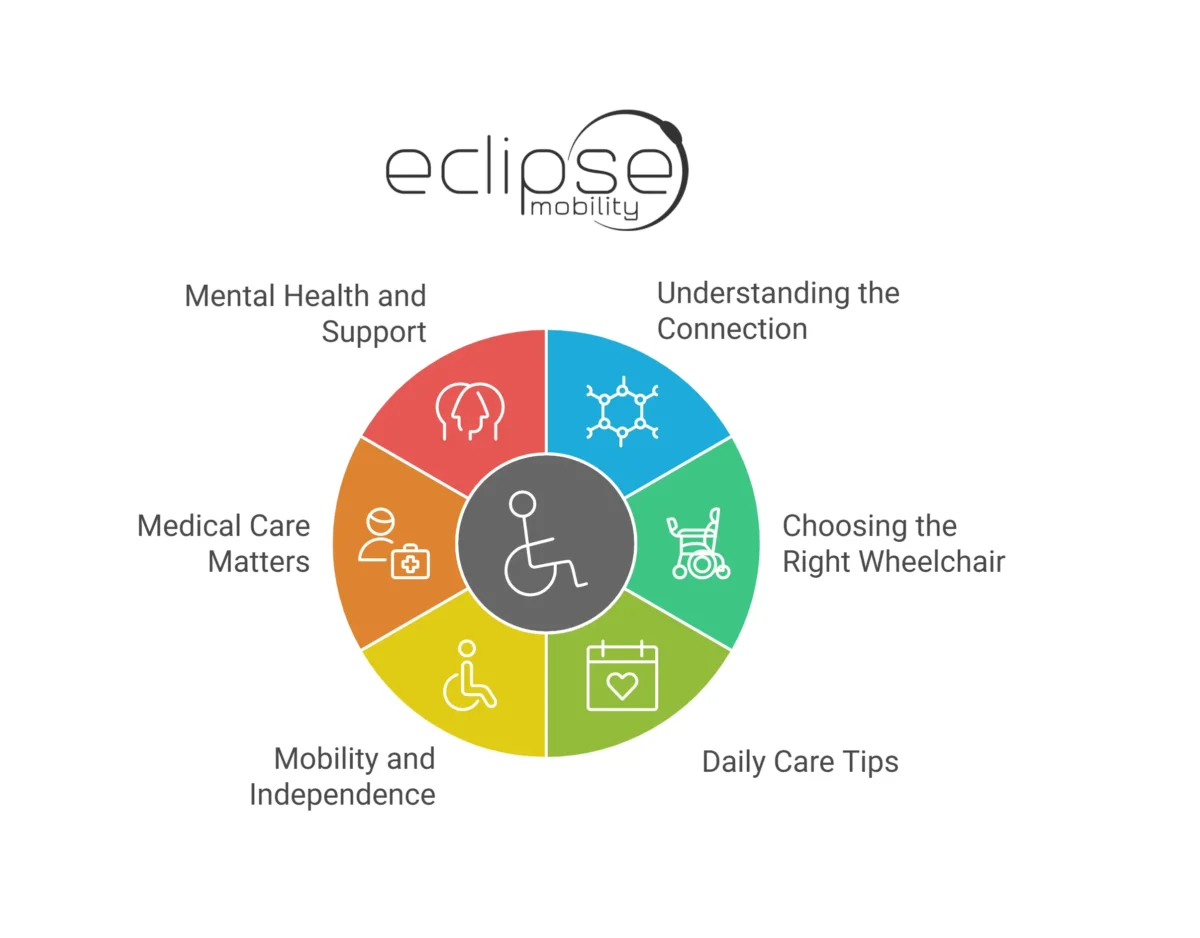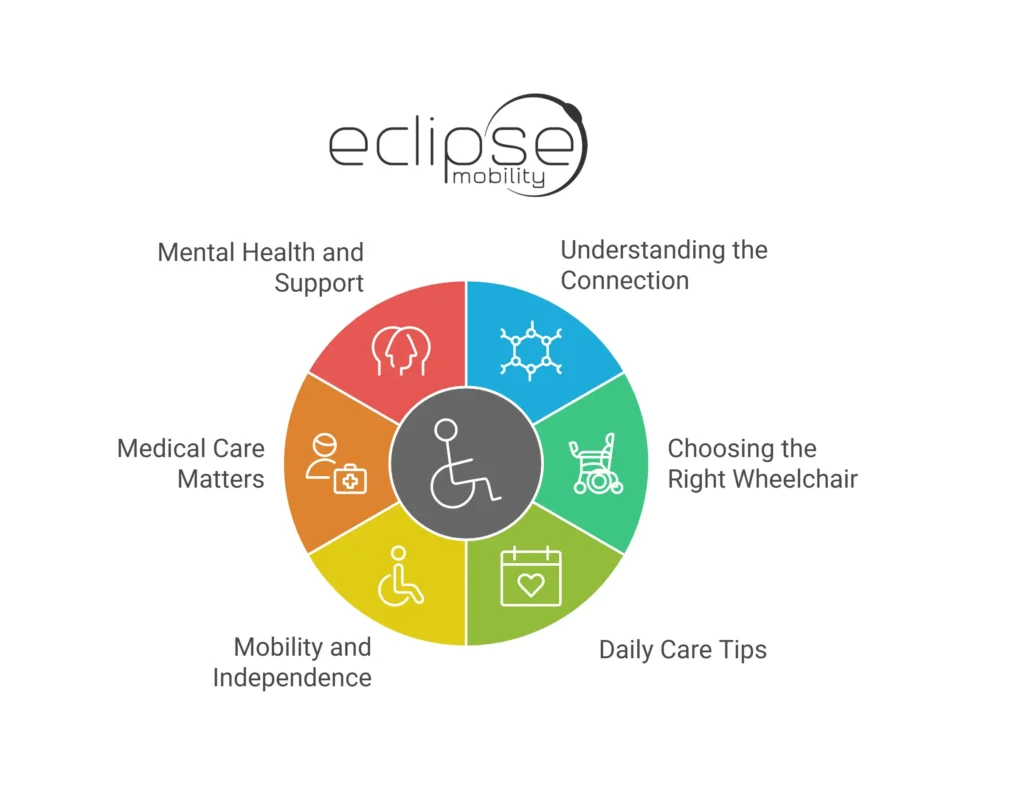Living with diabetes can be tough on its own. Add the need for a wheelchair, and daily life may feel even more challenging. But here’s the truth – life doesn’t stop. With the right mindset, tools, and guidance, you can still live fully. This guide is for wheelchair users with diabetes who want simple, practical ways to stay mobile, healthy, and confident.
Understanding the Connection
Diabetes affects the body in many ways. It can impact circulation, nerves, and energy levels. For someone using a wheelchair, these effects may be more noticeable. You might deal with fatigue, slower healing, or mobility struggles. That’s why having the right mobility wheelchair and a solid routine matters so much. The goal is not just getting around – it’s about living well every single day.
Choosing the Right Wheelchair
The wheelchair you use can make a huge difference. Comfort, support, and mobility all play a role in your daily health.
- Mobility wheelchairs come in different types – manual, power, and custom-fitted. If you deal with fatigue from diabetes, a power chair might help you conserve energy.
- Seat cushions and proper back support reduce pressure sores, which people with diabetes are more prone to.
- Adjustable footrests improve circulation and protect your feet, which is critical since diabetes can cause nerve issues.
When shopping, look at Wheelchairs for Diabetes specifically designed for pressure relief and better posture. A chair that fits your body well is not a luxury—it’s a necessity.
Daily Care Tips
Living with diabetes in a wheelchair means you have to pay attention to small details that add up.
- Check your feet daily. Nerve damage from diabetes can make it hard to notice cuts or blisters.
- Stay active. Even if you use a wheelchair, you can do stretches, resistance band workouts, or chair yoga. Movement keeps circulation strong.
- Watch your diet. Balanced meals stabilize blood sugar and prevent energy crashes.
- Keep skin clean and dry. Pressure sores heal slowly with diabetes, so prevention is key.
- Stay hydrated. Water helps regulate blood sugar and keeps skin healthy.
These steps may sound simple, but they prevent bigger problems down the road.
Mobility and Independence
A good mobility wheelchair is more than a piece of equipment—it’s freedom. It allows you to manage daily tasks, go out with friends, and handle life on your own terms. Diabetes may set limits, but your wheelchair helps push those limits back.
Independence also comes from small tools:
- Portable ramps for easier access
- Lightweight wheelchairs for travel
- Wheelchair gloves to reduce hand strain
- Smart cushions that remind you to shift position
These aren’t just gadgets – they are part of making life smoother and healthier.
Medical Care Matters
Regular doctor visits are non-negotiable. Let your healthcare team know about both your diabetes and your mobility needs. Podiatrists can check your feet, while physical therapists can suggest exercises to keep circulation flowing. Share how your wheelchair affects your daily routine. The more your doctors know, the better they can support you.
Mental Health and Support
Living with diabetes and using a wheelchair can sometimes feel overwhelming. That’s normal. What helps? Talking to people who understand. Look for support groups, either in person or online. Sharing tips and experiences with others using Wheelchairs for Diabetes can give you new ideas and emotional strength.
Don’t forget hobbies and joy. Whether it’s reading, painting, gaming, or spending time with loved ones—make space for what makes you happy. Mental health is part of physical health.
Final Thoughts
Diabetes changes the way your body works, and a wheelchair changes the way you move. But neither has to stop you from living a full life. With the right mobility wheelchair, daily care, and a positive outlook, you can manage both challenges.
This practical guide is just a starting point. Everyone’s journey is different, but one thing stays the same: you deserve independence, comfort, and dignity. Your wheelchair is not just about moving – it’s about living fully.
Live fully, move freely – see our wheelchair options today.
FAQs:
Q1. What type of wheelchair is best for people with diabetes?
A wheelchair with strong back support, pressure-relief cushions, and adjustable footrests works best. Power wheelchairs can also help conserve energy.
Q2. How can wheelchair users with diabetes prevent foot problems?
Check your feet daily, wear proper footwear, and keep good circulation. Using a mobility wheelchair with supportive footrests can also reduce risks.


